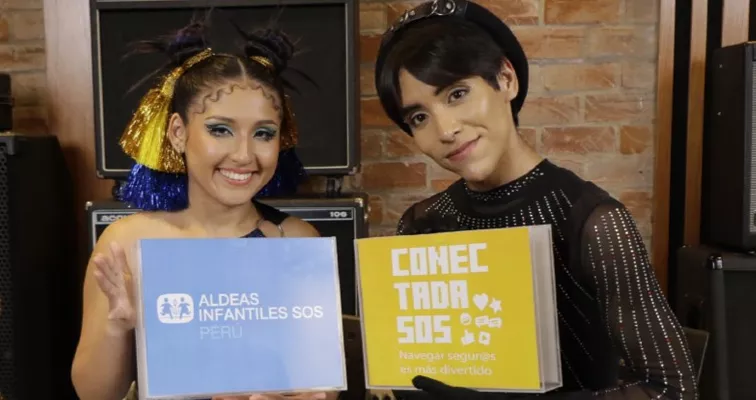Youth promote online safety in Peru with Conectadasos campaign

Violence comes in many forms, and one of them is cyberbullying, a form of harassment using digital technologies. It can occur on social networks, messaging platforms, gaming platforms, and email.
“It is a repeated behaviour that seeks to frighten, anger, and humiliate other people," says Yakelin Caycho, National Coordinator of Safeguarding and Child Protection at SOS Children's Villages Peru.
It often starts in person at school or in the neighbourhood, where a bully demonstrates power in front of others, even without an apparent reason, through mocking, intimidation, and humiliation. When bullying leaps into the online world, the consequences can be even more significant, in part because:
The number of viewers can increase significantly and quickly.
Herd mentality can lead others to participate in the harassment, multiplying the harm caused.
The ease with which abusers can remain anonymous or mask their identity makes it difficult to keep people accountable for their actions/words.
Once something is published online, it can be hard to have it removed, even if it causes harm.
- Online algorithms reward viral interactions without judging whether they perpetuate harm and untruth.
From personal experience, Yakelin says that the consequences of cyberbullying on its victims can be diverse, from anxiety and an exaggerated concern for some aspect of one’s image to gender-based consequences. For girls, there is a tendency towards sleep and eating disorders, while for boys, there is a tendency towards isolation and violent behaviour.
Connectadasos campaign
In response to the need to better inform young people about online safety, SOS Children’s Villages Peru implemented a campaign called ‘Conectadasos’ (Connected). The campaign seeks to empower children and adolescents to learn how to care for themselves and their peers, encouraging the responsible use of digital platforms.
The Connectadasos campaign, launched in 2022, responds to the alarming rise in cyberbullying cases in Peru. A national survey by SOS Children's Villages Peru revealed:
61% of children and adolescents experienced cyberbullying
23% practiced dangerous viral challenges
- 12% suffered grooming and 4% sextortion.
An essential element of the campaign is to inform and increase awareness among educators, parents and caregivers about the risks of cyberbullying and how to prevent them.
Youth against cyberbullying
Sofia and Miguel are the main characters of the Connectadasos campaign. They are animations that share information about cyberbullying, but the campaign also includes the participation of young people.
Teresa*, who has lived in an SOS Children's Villages Peru village since she was four, is now one of the campaign’s spokespersons.
She wants children and young people to be aware of the dangers and challenges posed by social networks.
The campaign slogan is “Navegar seguros es mas divertido” (Surfing safely is more fun). According to Cecilia Quintana, SOS Children’s Villages Peru's Communications Director, initiatives such as Conectadasos are important because, in addition to putting this social problem on the media's agenda, they help prevent this type of online harassment while protecting and educating children and adolescents, promoting positive online values, and creating a safer and more empathetic digital society. It also positively impacts the lives of the victims and the community in general.
*Name changed to protect privacy.
